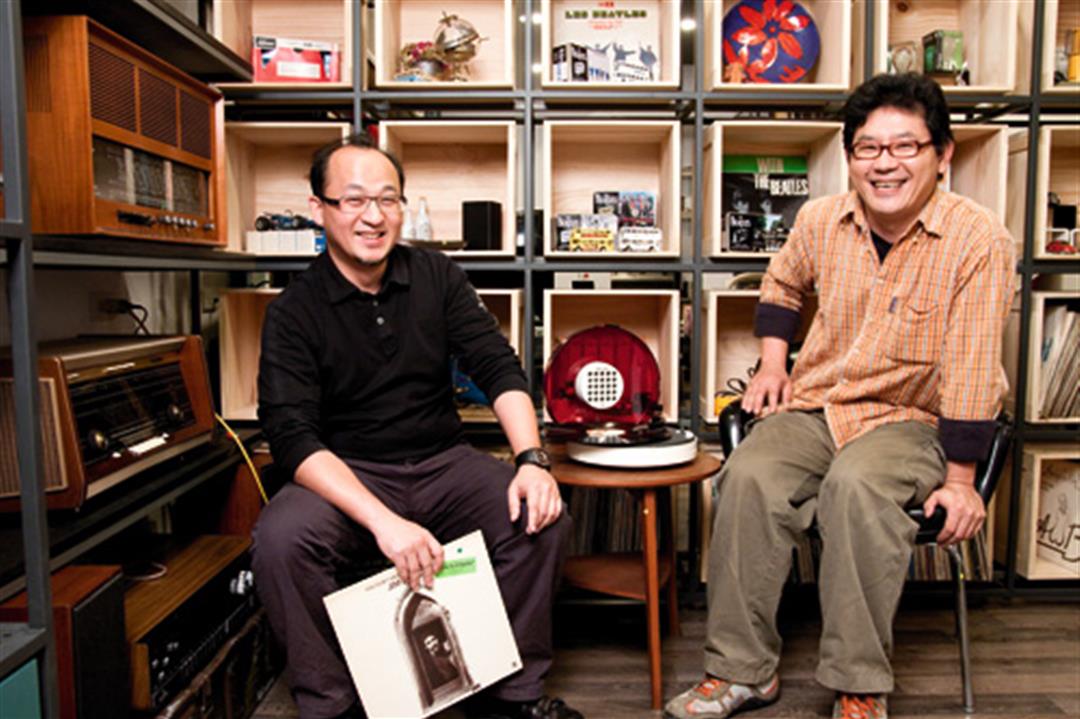Concentrated culture: the Fujin Street area
In the area that begins around Fujin Street and Minsheng East Road Section 5 and extends to Yanshou Street and Xingzhong Street, most of the residences are old apartment buildings, five stories high at most and more than 30 years old. The majority of the buildings have a small garden out front, and are popular rental property among firms engaged in architectural design, advertising design, and movies and television. The deeply shaded Fujin Street, in particular, feels far removed from the noisy hubbub along the main streets.
Minsheng Community covers an area of about three square kilometers, so it’s not big, but it is Taiwan’s first American-style pilot community. The design was hatched in 1967 using a US$5-million loan provided under a US foreign aid program. Oozing a relaxed, American way of using space, after a half-century of evolution the project has emerged as the single community in all of Taiwan with the highest concentration of activity in the cultural and creative industries.
The community is home to over 200 companies or freelance individuals engaged in design, movies, and television, and the area is often chosen as a filming location for movies, TV shows, and music videos. Scenes for the movie Au Revoir Taipei were filmed on Xindong Street, while the makers of both Taipei Exchanges and Turn Left Turn Right did filming in Minsheng Community and the Fujin Street area.
Interior décor at Budda Tea House, which has been open for business for more than 20 years on Fujin Street, features tatami mats, sliding doors, and hanging curtains. Outside there are red doors and posts, plus flowers and old trees in the courtyard. These features lend a distinctly Oriental feel to the place. The shop offers a wide selection of teas, and year after year their fragrance and flavor never change. The proprietor sources his tea from a plantation in his hometown in Nantou County’s Lugu Township, and he roasts the tealeaves himself to maintain consistent quality.
Across the street from the quiet, shady Xinzhong Park is an understated and elegant shop called Lane & Trip, which specializes in city bicycles from Europe. Unlike ordinary bicycle shops, which bristle with cycles suspended from the ceiling, Lane & Trip only has about a dozen or so bikes on display, each with a style all its own. Also on display are bicycle seats, riding clothes, bandanas, and other accessories. The overall effect is one of relaxed refinement. Most of the shop’s city bikes come already assembled from factories in the UK and Denmark, where the emphasis is on foldable convenience. Created by famous designers and made by hand, these bicycles afford style-conscious urbanites a mode of transportation quite unlike anything one usually runs across.
Little Fujin Street, with its increasing numbers of distinctive knick-knack shops, floral design shops, and smartly appointed coffee shops, has now begun to have an impact on nearby streets. The result is a growing atmosphere of style-conscious living.
Among the 11 creative clusters planned out by the city government, relatively well-known ones in the center of town include the Kang-Qing-Long district (Yongkang, Qingtian, and Longquan streets) and the Wen-Luo-Ding area (Wenzhou, Roosevelt, and Dingzhou roads), while Taipei’s eastern quarter has its Very Fun Park.

The American-style Fujin Street area includes a high-end bicycle shop, a vinyl record store, and teahouses that beckon for passersby to stop in for a sit.